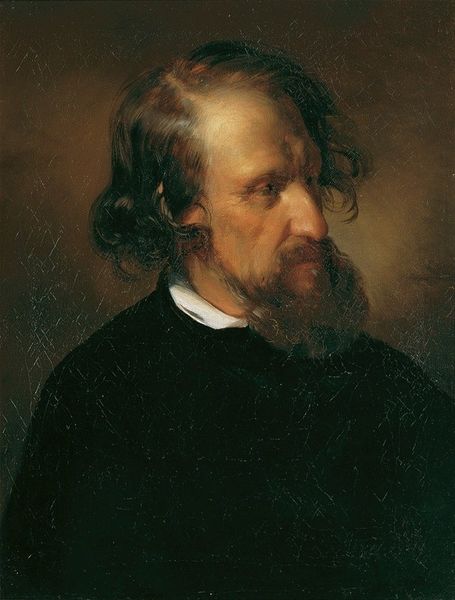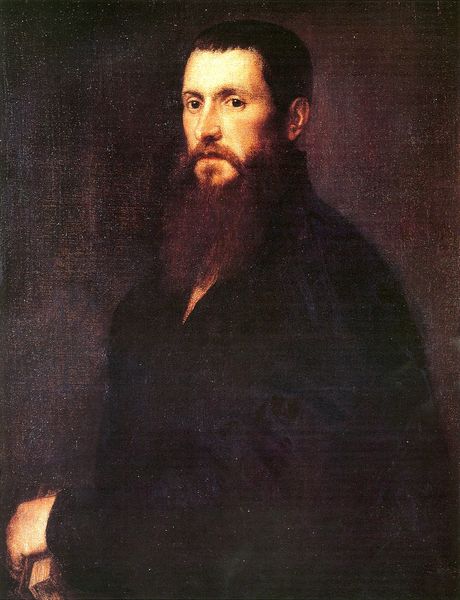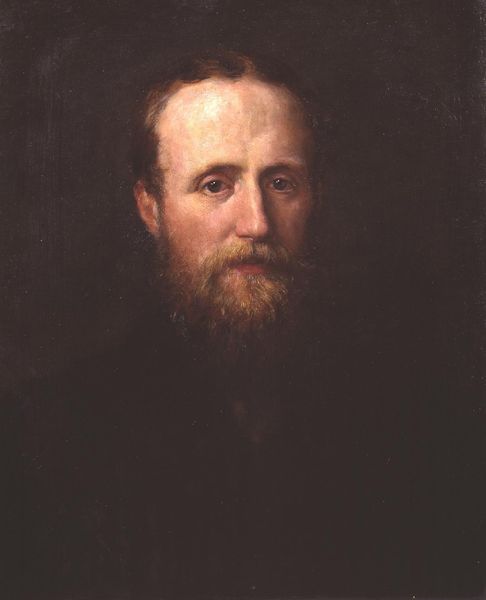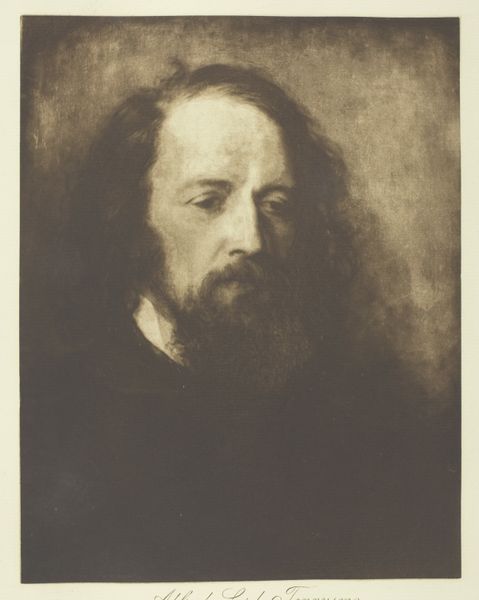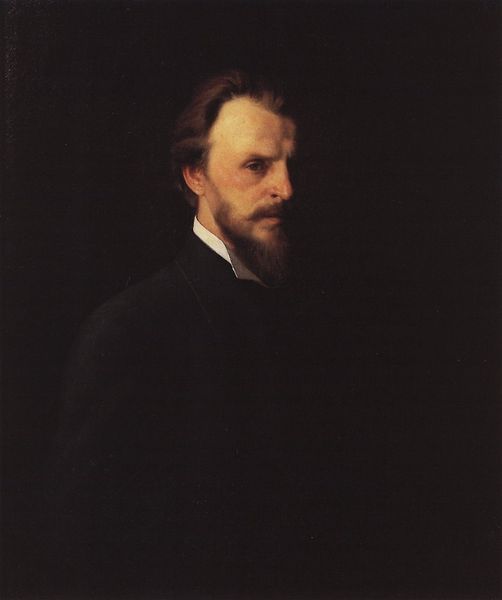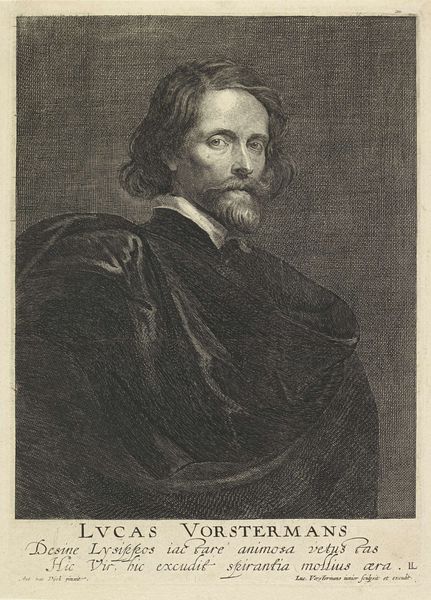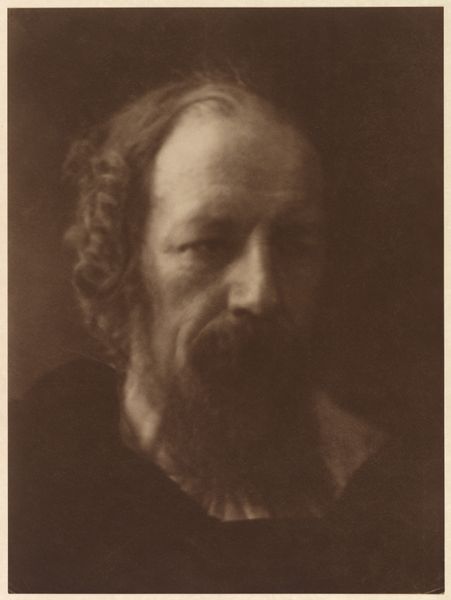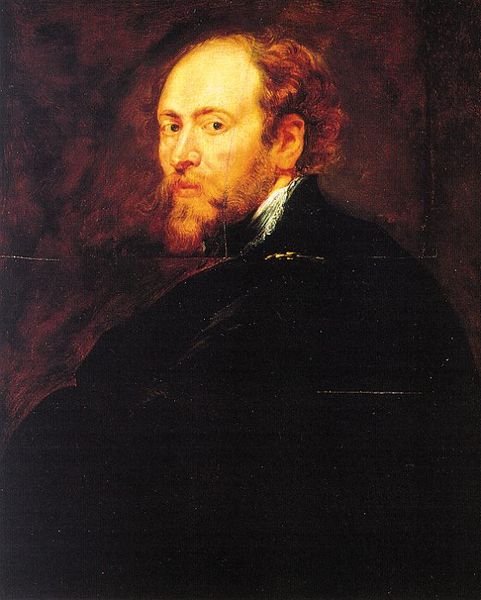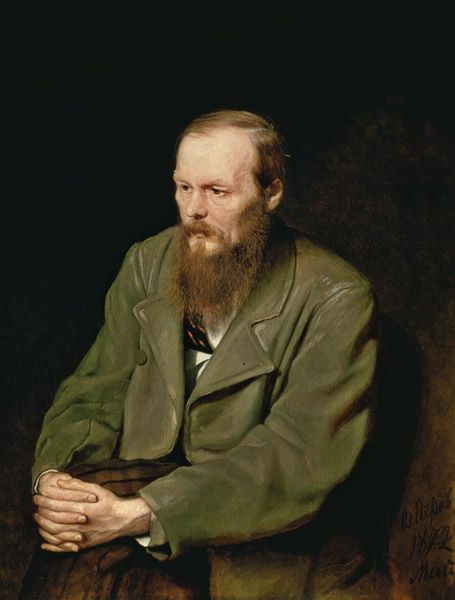
Dimensions: 72 x 55 cm
Copyright: Public domain
Curator: Let's examine this portrait of Pierre-Joseph Proudhon, completed by Gustave Courbet in 1865 using oil paint. Editor: The overwhelming darkness hits you first, doesn’t it? The subject emerges, framed by these deep shadows. Almost feels like he’s resisting being seen. Curator: Precisely. Consider Courbet’s choice of a somber palette; it aligns with Proudhon’s philosophical seriousness. Beyond aesthetics, though, what interests me are the material choices: the texture of the canvas, the thickness of the oil paint itself, which contributes to a sense of weighty realism. How was the paint acquired, how was it applied? These questions connect the image to the socioeconomic fabric of its time. Editor: I’m drawn more to the penetrating gaze. There’s a weight of intellectual labor in those eyes, don’t you think? He seems burdened by the symbols he’s carrying. Look at the beard, the modest glasses – markers of the intellectual class but presented without grandeur, almost… utilitarian. Curator: "Utilitarian" is an astute observation. The clothing is deliberately unostentatious; no frills, no finery, just a practical garment. It reflects Proudhon’s rejection of bourgeois extravagance and Courbet's Realist principles concerning portraying the real conditions of existence and the world of the studio itself. What kind of social reality does it construct through its stark presentation? Editor: It’s a carefully constructed image, isn't it? Courbet utilizes familiar symbols, like the austere clothing, to signify Proudhon's philosophical leanings. He's essentially building a visual language of intellectual honesty and moral integrity. I suspect that many who were viewing the work knew and understood the image system behind the sitter, whether in agreement or opposition with Proudhon. Curator: And the production process isn't invisible, it highlights and honors that relationship of mutual recognition between subject and sitter, with each element hinting to systems of exchange – economic and philosophical – informing its manufacture and presentation to audiences. Editor: That shared meaning through imagery creates such a striking image, capturing the zeitgeist. It feels potent, even today. Curator: A potent intersection of artistic labor, philosophical ethos, and socioeconomic commentary indeed. Editor: I find the lasting power of visual symbols incredible; they allow people to understand past eras so vividly.
Comments
No comments
Be the first to comment and join the conversation on the ultimate creative platform.

